Active thin-film devices enable flexible tunable filters for telecommunications and for industrial and consumer applications such as mid-IR gas sensors.
Dr. Lawrence H. Domash, Aegis Semiconductor
The growth of wavelength division multiplexing (WDM) fiber optic networks greatly accelerated the demand for tunability in components such as optical channel monitors, add/drop data filters, lasers and receivers. As a result, virtually every type of dispersive element used in telecom — fiber Bragg gratings, microelectromechanical systems (MEMS) Fabry-Perots, waveguides, diffraction gratings — has seen the development of a tunable version.
Until recently, however, thin-film interference filters, the most flexible and widely deployed spectral filters, have not had a tunable counterpart except for limited application of mechanically rotated filters, and most thin-film engineers did not envision a practical means for achieving wide tunability.
This problem has been solved with a new family of WDM filters based on a group of thin-film materials — the amorphous semiconductors —familiar from solar cells, thin-film transistors and flat panel displays.
Although amorphous silicon has excellent transparency in the near-IR and a usefully large refractive index, it is sensitive to temperature changes and therefore has been considered unsuitable for use in passive WDM components where stability is a primary requirement. But tunable thin films based on thermo-optic semiconductors are proving to be a practical technology, available in many wavelengths and with characteristics to address applications such as sophisticated telecommunications systems and sensors for the home or auto. Manufactured and tested on wafer-scale, they are poised to make tunability widely available at the price of static components.
Tuning with temperature
For telecommunications applications in the 1500-nm region, amorphous silicon is becoming a key material. When deposited by plasma-enhanced chemical vapor deposition, amorphous silicon can offer a thermo-optic coefficient — sensitivity of the refractive index to temperature — almost 30 times greater than that of typical dielectric films, such as silicon dioxide.
Whereas conventional WDM dielectric thin-film filters using standard materials such as tantalum pentoxide/silicon dioxide have thermal tuning coefficients on the order of 2 pm/°C, these amorphous silicon/silicon nitride filters display coefficients of 90 to 175 pm/°C, depending on substrates, deposition parameters and temperature (Figure 1).
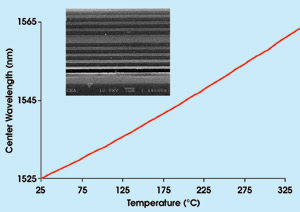
Figure 1. A thin-film, single-cavity Fabry-Perot filter comprises alternating layers of amorphous silicon and silicon nitride on a silicon wafer substrate. The data of center wavelength vs. temperature shows 37 nm of tuning from 1525 nm at 25 °C to 1562 nm at 325 °C, covering the telecom C-band.
Although the idea of thermo-optic tunable thin films is simple and straightforward, it was not obvious that a commercial product could meet the stringent reliability demands of the telecom industry. Intensive engineering of deposition methods, alloys, substrates and annealing recipes have enabled the development of thin-film structures that can withstand up to 350 °C cycling in microscopic volumes, 10 times per second, for hundreds of millions of operations without thermomechanical failure or significant drift of optical or electrical properties.
Thin-film filters differ from MEMS filters in that they can have much more flexible spectral designs. Simple Fabry-Perots (consisting of two partially transmitting mirrors separated by a spacer or cavity) are adequate for monitoring functions; for more demanding applications, thin-film filters may comprise several spacers and a multitude of partial reflectors in complex structures involving a hundred or more layers and up to seven coupled cavities.
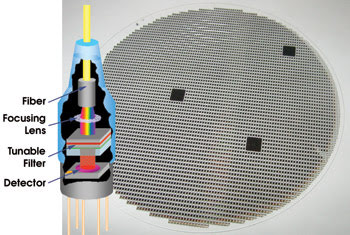
Figure 2. The low manufacturing cost of the tunable optical detector enables its deployment much more widely at key points throughout network architectures.
Such multicavity designs are essential for high-performance data filters for add/drop WDM because filters in the signal path must offer low insertion loss, shaped spectral passbands and controlled chromatic dispersion. Simple Fabry-Perots cannot achieve these characteristics.
Adding tunability to data filters allows an operating principle radically different from conventional static filters (Figure 3). Static filters for a typical 100-GHz channel grid have had flattop, rectangular passbands to allow tolerance for laser frequency drift within a given channel. The trade-offs are in fabrication costs and impairments for pulse dispersion.
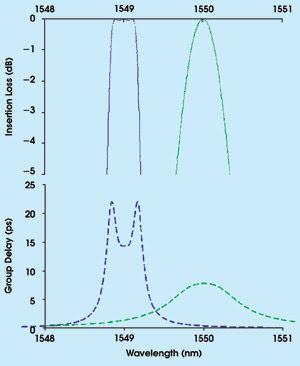
Figure 3. Two types of filters can multiplex or demultiplex (add/drop) WDM signals: flattop passbands in static filters (blue) or rounded passbands in tunable filters (green). At bottom, group delay vs. wavelength characteristics show that static flattop filters have more chromatic dispersion than tunable round-top filters.
In contrast, tunable data filters compensate for laser drift with agile tuning and continuous feedback. Instead of a rigid flattop shape, the dynamic filter has an optimally rounded top to provide a slope that works with an active feedback circuit to keep the filter centered on the laser signal even as the laser varies, while still offering a wide enough passband for 10-GHz data traffic. Round-top filters are equally able to meet requirements for adjacent-channel rejection, and they are easier to manufacture.
Tunable data filters offer not only a cost advantage over the large inventory of individual fixed-channel filters they replace, but also a reduction in chromatic dispersion (Figure 3, bottom). The static flattop filter suffers from large dispersion near the corners of the filter passband, but the rounded tunable filter displays a benign, nearly flat group delay over its full passband.
Thus the tunable approach to an add/drop filter does more than reduce part count; it adds kilometers of reach to each span. This is beneficial for 10-Gb/s data systems and will become critically important at 40 Gb/s.
Switchable add/drop filters
Thermo-optic filters also can offer new and dynamic functionality. As an example of one new form of telecom switchability, consider a five-cavity, 117-layer design (Figure 4). The usual concept of a tunable filter is one with fixed transmission and a tunable center wavelength. This device has a fixed center wavelength (in this case, 1548 nm) that switches between transmissive and reflective states under thermal activation.
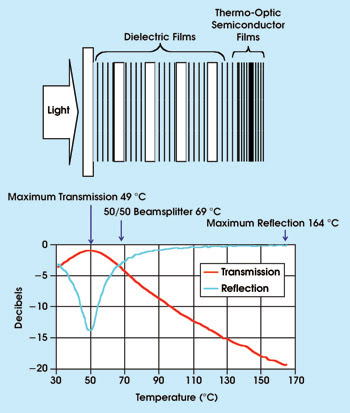
Figure 4. A hybrid five-cavity tunable filter has a fixed center wavelength and switches between transmissive and reflective states under thermal activation. The graph shows the temperature-induced transition from transmission to reflection at a fixed wavelength of 1548.3 nm.
The thin-film stack is a hybrid comprising four cavities (104 layers) of tantalum pentoxide/silicon dioxide (not temperature-sensitive) followed by a fifth cavity (13 layers) of thermo-optic amorphous silicon/silicon nitride.
At room temperature, the thermally sensitive fifth cavity is designed to have a slightly lower center wavelength than the four static cavities; as a result, the filter has little or no transmission at room temperature. As the temperature increases to a “resonant temperature,” the thermo-optic cavity becomes synchronous with the static parts, and the filter becomes a highly transmissive, five-cavity bandpass filter.
In Aegis Semiconductor’s prototype, the resonant temperature of maximum transmission was 49 °C; at higher temperatures, the filter became progressively more reflective and less transmissive. This device performs the function of a switchable add/drop filter without an external optical switch.
Tunability for chemical sensors
The telecom filters described display a tunable range on the order of 3 percent of center wavelength, or about 50 nm at 1500 nm, significant in terms of optical communications but not meeting the usual definition of broad tuning by the standards of molecular spectroscopy. Can thermo-optic tunable filters offer useful capabilities in mid-IR applications such as sensing of trace gases in the 3- to 8-μm range?
To test this, Aegis fabricated filters designed for the 4.6-μm absorption band of carbon monoxide, a challenging problem because, at the 50-ppm toxic-threat level, this gas causes a change in absorptance of only 0.1 percent per meter of path length. Instead of amorphous silicon, it used germanium, which provides good mid-IR transparency and a very large thermo-optic coefficient, leading to a temperature coefficient of center wavelength of 0.6 nm/°C. The three-cavity filter had a bandwidth of 30 nm and a center wavelength of 4550 nm at 25 °C; it tuned to 4670 nm at 225 °C (Figure 5).
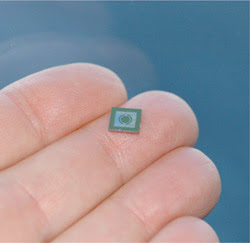
Figure 5. A germanium three-cavity filter with integral heater ring is tunable from a center wavelength of 4550 to 4670 nm, a useful range for carbon monoxide detection.
To test the usefulness of such filters, the company built a carbon monoxide sensor test bed consisting of a blackbody emitter, tunable filter, gas cell and thermopile detector. The filter’s tunability enabled the use of advanced signal processing algorithms with lock-in detection. By periodically scanning the filter across the carbon monoxide absorption band, it detected concentrations of less than 20 ppm, a level of performance previously reserved for large laboratory instruments.
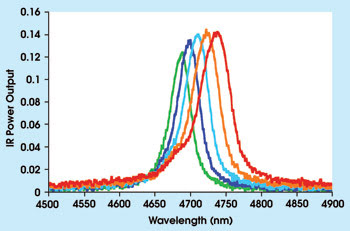
Figure 6. Packaging a tunable filter near a modulated blackbody creates a tunable mid-IR emitter that could replace a tunable laser at a fraction of the cost.
Another way to use a tunable IR filter is as part of a tunable emitter (Figure 6). The company packaged a tunable filter near a modulated blackbody whose thermal radiation not only provides the IR source, but also thermally tunes the filter wavelength. The emitter is packaged in a small TO-5 can and scans its full range in about 100 ms. For some sensor applications, this type of miniaturized narrowband tunable emitter may be able to replace the function of a tunable laser for less than 1/1000 the cost.
Meet the author
Lawrence H. Domash is chief scientist at Aegis Semiconductor in Woburn, Mass.